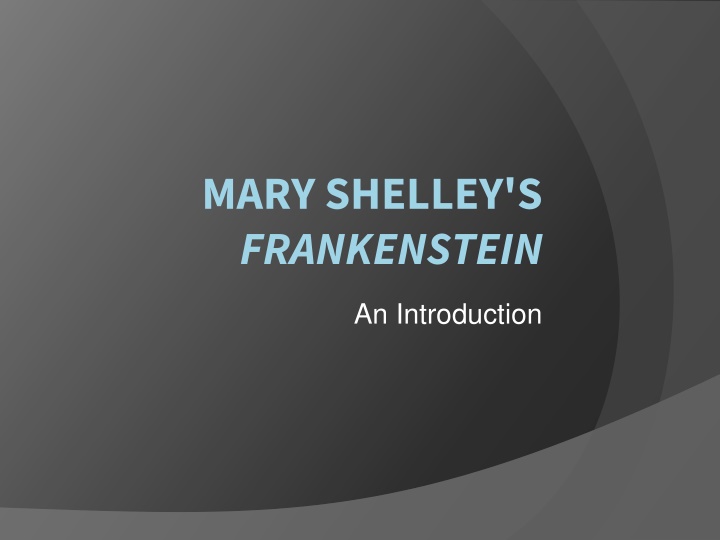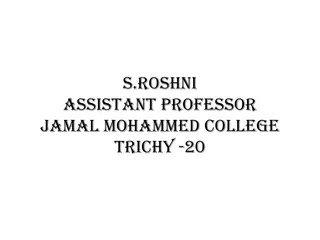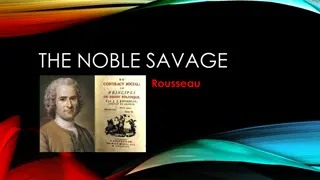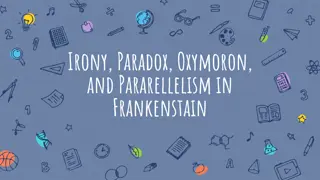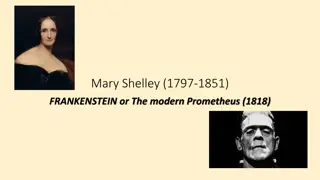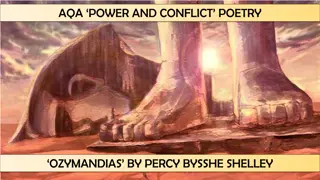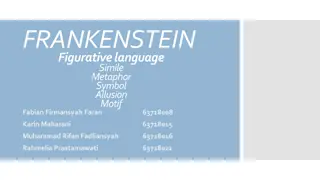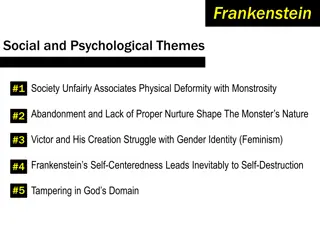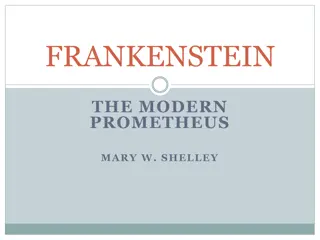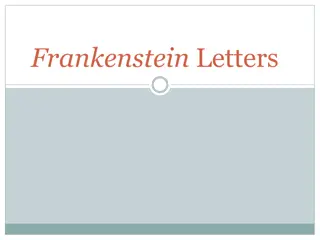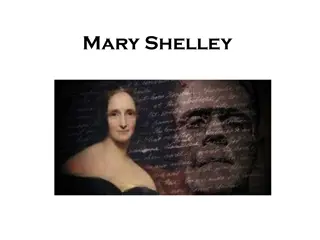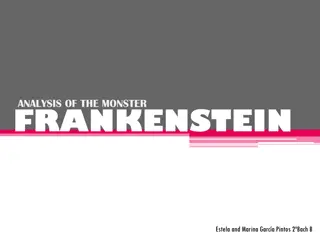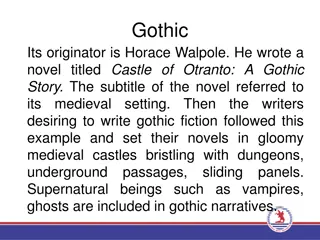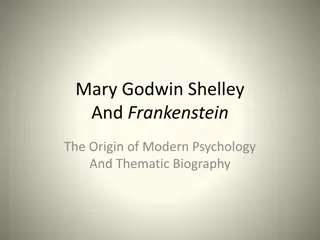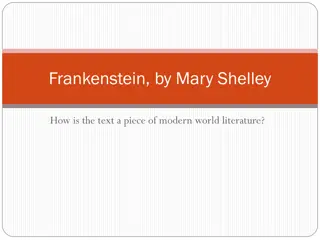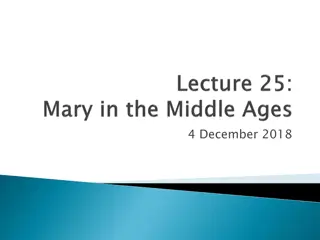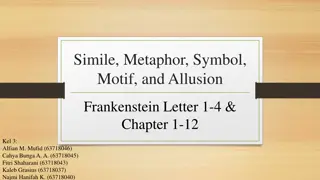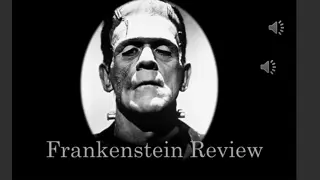Mary Shelley's Frankenstein: An Intriguing Introduction
Mary Shelley, born in 1797 to writers William Godwin and Mary Wollstonecraft, had a tumultuous life that greatly influenced her masterpiece, Frankenstein. Her novel, framed within a frame story by Robert Walton, explores themes of ambition, creation, and the consequences of playing god. The settings in late 1700s Europe provide a dark and atmospheric backdrop to the narrative, as major characters like Victor Frankenstein and the Creature grapple with their identities and fates. Shelley's use of foils and doppelgangers adds depth and complexity to the story, making it a timeless classic in literature.
Download Presentation

Please find below an Image/Link to download the presentation.
The content on the website is provided AS IS for your information and personal use only. It may not be sold, licensed, or shared on other websites without obtaining consent from the author.If you encounter any issues during the download, it is possible that the publisher has removed the file from their server.
You are allowed to download the files provided on this website for personal or commercial use, subject to the condition that they are used lawfully. All files are the property of their respective owners.
The content on the website is provided AS IS for your information and personal use only. It may not be sold, licensed, or shared on other websites without obtaining consent from the author.
E N D
Presentation Transcript
MARY SHELLEY'S FRANKENSTEIN An Introduction
Mary Shelley Born in 1797 to writers William Godwin and Mary Wollstonecraft. Her mother died shortly after Mary was born. Shelley learned about her mother through her writings, including A Vindication of the Rights of Woman (1792) which advocated that women should have the same educational opportunities and rights as men.
Mary Shelley She knew some of the most important men of the time through her father, like William Wordsworth and Samuel Taylor Coleridge. Married poet Percy Bysshe Shelley in 1816 after a scandalous affair. While the couple was visiting poet Lord Byron in Switzerland, Mary Shelley conceived the idea for her novel, Frankenstein. The first 3 of their children died; their fourth survived. However, Percy drowned in 1822.
Structure Frame story: the result of inserting one or more small stories within the body of a larger story that encompasses the smaller ones. The letters of Robert Walton frame Frankenstein; his letters begin and end the story. Epistolary novel: Any novel that takes the form of a series of letters either written by one character or several characters.
Settings Set in late 1700s Europe. Walton writes to his sister from the Artic. Frankenstein grows up in Geneva, Switzerland. He attends college in Ingolstadt, Germany.
Major Characters Victor Frankenstein The Creature Henry Clerval Elizabeth Lavenza Robert Walton Justine Moritz
Foils Definition: a character who sets off another character by strong contrast. This contrast emphasizes the differences between two characters, bringing out the distinctive qualities in each. Shelley provides more than one foil for the protagonist, Victor Frankenstein.
Doppelgangers Doppelganger is German for double image. A doppelganger is a second self or an alternate identity. Famous doppelgangers: Dr. Jekyll and Mr. Hyde Bruce Banner and The Incredible Hulk Batman and The Joker
Double Motif Two characters represent opposing forces in human nature. Doppelgangers suggest that humans have a dual nature, a soul that is divided. In Frankenstein, the Victor Frankenstein and Creature characters represent the soul s dual good and evil nature.
Romanticism Romantic literature appeals to aspects such as emotion, nature, imagination, inspiration, and individuality. Romanticism began in Europe during the 18thcentury, and it came about as a revolt against the precise, rational, and scientific thinking of the Enlightenment period. In Frankenstein, Victor struggles with Enlightenment and Romantic ideals.
Gothicism Frankenstein is generally categorized as a Gothic novel, a genre of fiction that uses gloomy settings and supernatural events to create and atmosphere of mystery and terror.
The Modern Prometheus The alternate title for Frankenstein is The Modern Prometheus. Prometheus was the Titan god who was entrusted with the task of molding mankind out of clay. His attempts to better the lives of his creation brought him into direct conflict with Zeus. Prometheus tricked the gods out of the best portion of the sacrificial feast, acquiring the meat for the feasting of man. Then, when Zeus withheld fire, Prometheus stole it from heaven and delivered it to the mortals.
The Modern Prometheus As punishment for these rebellious acts, Zeus ordered the creation of Pandora (the first woman) as a means to deliver hardships to the humans. Prometheus was arrested and bound to a stake on Mount Kaukasos where an eagle was set to feed upon his ever- regenerating liver.
